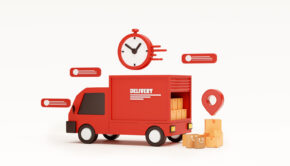Shopping Local When I Own An eCommerce Business
How often do you shop locally? Do you have a lot of local flavors that seem to do well, but haven’t left state or regional borders?
Whether it’s a brand you own or a local brand you love, a successful local product can succeed almost anywhere. There are a few cultural barriers, but by researching other markets and advertising properly, you can open up new markets for you and your future business partners.
Here are a few details to help you understand the opportunities ahead, and ways to set up a shop shares your local shopping with the world.
The Big Stores Miss Many Unique Products
Major business such as Amazon make great business by becoming storefronts for the biggest wants and needs.
People will search for big brands or specific categories, but what if you have access to a product that doesn’t fit a popular mold? You have both a unique vector for sales success and a sales challenge.
Searching local or small town markets can help you discover things that larger businesses can’t easily access. While any successful business will have talent scouts, it’s not likely that you’ll be in the exact same towns and discovered the exact products.
Businesses are also hampered by their big success when it comes to local products. Just because a talent scout discovered a product doesn’t mean the business will act on the discovery; it may not seem like a big deal, or the talent scout’s discovery may languish in bureaucracy long enough for you to act.
If you’re not already a master of global markets, you have the flexibility to discover and act–of course, with a more limited budget than the bigger stores. Discover, test the market, and think about how to reach customers.
Is Your Product Unknown
While major online shopping companies have big selections that certainly include unique options, how do you bring eyes to your product? Do you have tools on Amazon, eBay, Alibaba, or other services to sell your goods?
You might, but could you do more? Definitely.
If you’re selling a unique product, it doesn’t matter how amazing or special it is if people can’t learn about it. You’re competing for attention, and the internet is one major battlefield to grab the eyes and attention spans of others.
Your advertisement plan should be conventional at first. Figure out how similar products are marketed and follow those avenues to get in front of as many eyes as possible during the early phases.
Keep in mind that you will have at least two markets two consider. One market will be people who are looking for the type of product you have on hand, such as a type of pasta or a better air fresher. The other will people who want anything new and unique.
The first market is the easiest. Follow trends and figure out what current customers are looking for. There will always be different flavor preferences, different methods of handling, or quality issues with current products.
If your product doesn’t fit a current product category at the moment, keep looking while describing your product as best as you can. While being revolutionary can be a massive marketing point, you could lose a lot of easy sales by not getting the attention of customers who need a replacement.
Marketing to people who want something new is the biggest challenge. You need to have their trust already, since many people who want something new will have a constant barrage of oddities in front of them.
You could risk marketing based on sight and features alone, but try to figure out where multiple income levels of unique product-hunters shop. Figure out their price points and how your product could reach multiple levels.
This can be done by selling a premium item that only select, discerning, high-income buyers can afford. Your product could be so vital that everyone wants it, but only at price that seems fair to the market.
It’s entirely up to you, but none of that matters if you don’t prepare an education, marketing, and distribution plan.
Distributing Local Discoveries
Local products have the benefit of a local following, even if they’re not buying for you yet.
You have a test market and a local, proven flavor, but how do you get the product across the nation? What about the world at large?
Reaching multiple regions is easier than ever with social media and advertisement campaigns. Starting an eCommerce business line can help you figure out who is interested, what they’re willing to pay, and where they’re willing to ship.
A great eCommerce business tool for new and unique products is the waiting list. Before you’re ready to send the product out–even before you have a fully-equipped business at all–you can advertise to customers and figure out if people want to buy what you have to sell.
This is a door-to-door saleperson’s greatest dream and worst nightmare. These days, your only worry is adblockers and email filters hiding your advertisements, which is just the digital equivalent of throwing away a pamphlet. No awkward conversations, doors slammed in your face, or barking dogs!
Create an eCommerce business website that can work as your digital base of operating first. You don’t need to make any false promises about having a product on hand right now; a notice about a product coming soon is enough for most people, and this can help you figure out whether your business is worth acting on at the moment.
There are a few exact sciences to how this could work. People won’t wait on your waiting list forever, and nagging them too much about a product that doesn’t exist yet may cause potential customers to drop from the waiting list.
Don’t worry about that now. Instead, make your waiting list the product. Platforms such as Magento services can help you build a mock-up online store and management system where you can treat these interested buyers like customers.
Collect interest with the product online first. Then, research prices based on similar products, their price history, and the cost of distribution.
Don’t make a move until your expected sales can support distribution. The real cost in any business will be buying a warehouse, hiring an online dropship company, or otherwise distributing the product.
Once your prices are in order, you’re ready to sell! Businesses grow in support needs such as customer service, internal technical support, logistics, administration, and legal based on how successful and challenging the market becomes.
Before worrying about that, get those sales ready. Set up your eCommerce system using tools such as Magento services, work with your local businesses, and interview your potential customers to make your plan a reality.
Contact an eCommerce expert to discuss a business plan, shopping for local products to distribute, or other great ideas for local entrepreneurs.
















